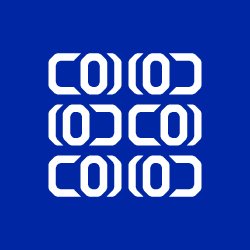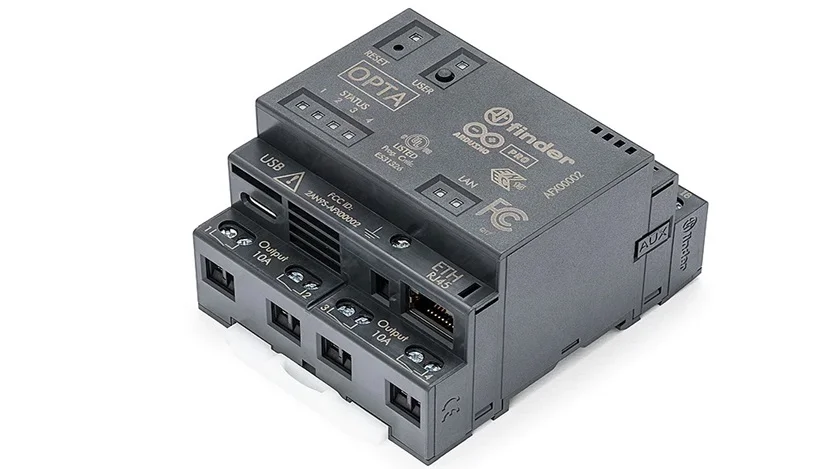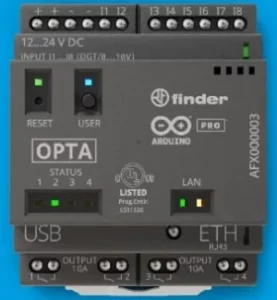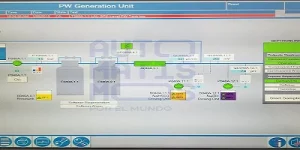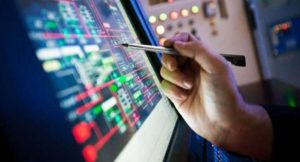Today we are going to talk about a topic that I personally like a lot and mixes two of my favorite topics: PLCs and Arduino.
And is that recently has seen the light a new model of PLC, but this time based 100% on an Arduino. Do you want to know more about this topic? Well, I advise you to keep reading, I assure you that this article will interest you.
Let’s start!
What is an Arduino?
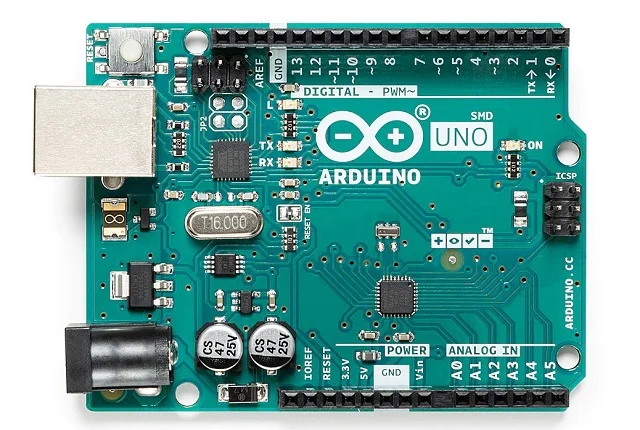
If you have been part of our Community for a long time you surely know this answer. But if this is the first time you hear the word Arduino, I recommend the following article before continuing so you can understand all the content that we will explain below.
See article: Guide to buying my first Arduino Kit
Let us now continue with the second essential concept to understand today’s topic.
What is a PLC?
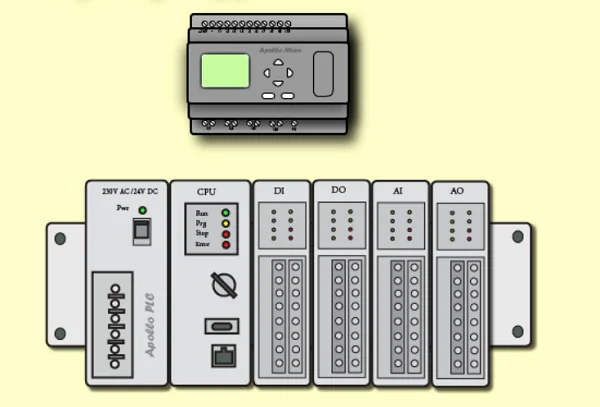
A PLC is a Programmable Logic Controller or Programmable Logic Device. It is nothing more than an industrial computer, used for process control and automation. They are usually made up of numerous inputs and outputs for optimal multifunctionality.
This concept that you have read is well explained in our article on PLC that we leave you below in case you do not know about this topic or want to refresh or deepen a little more.
-See article: PLC, everithing you need to know
What is a LOGO?
This is the last of the concepts that we must know. But this concept can lead to confusion with PLCs and is that the LOGO! are considered low performance PLC or Programmable Logic Relay. They are named in this way because they have a limited capacity of applications compared to a high performance PLC or advanced industrial use.
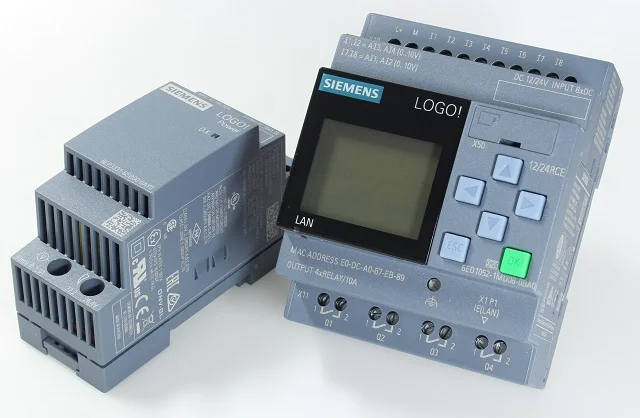
Note that LOGO! is the trademark used by SIEMENS to design or encompass the so-called Programmable Logic Relays or low performance PLC. But being such a famous equipment, it is usually called this way, perhaps erroneously, to the devices of the different manufacturers.
Anyway, all this we made it clear in our article on the subject which we leave the link below.
-See Article: LOGO! from SIEMENS, whta is it? Is it really a PLC?
So, having clear answers to the previous questions, we can now get down to today’s topic.
Arduino Opta, what is it?
As defined by Arduino:
The Arduino Opta is a micro PLC, very easy to use, with extensive security features and IoT capabilities included. It has been designed in direct collaboration with Finder.
Now the definition of Finder:
Opta is the first Programmable Logic Relay developed by Finder. A new option for engineers, designers and anyone who wants to add intelligent logic to a control cabinet, machine or any other industrial automation project.
We can see that both developers define it from their point of view, but seeing the features, design and functions it employs, we decided to opt a little more for Finder’s definition.
This device was manufactured by this company (Finder) in Italy, complying with all relevant European certifications for its production. According to the manufacturer it meets the requirements for industrial grade applications, combining build quality and the reliability of the Arduino ecosystem, ensure the creation of a truly unique device.
Arduino Opta versions
Three versions have been created for these devices:
Arduino Opta Lite |
Arduino Opta RS485 |
Arduino Opta WiFi: |
|
|
|
|
| Integrates Ethernet port and USB-C as programming ports. | Integrates Ethernet port, USB-C as programming ports and adds RS485 connectivity interface. | It is the most complete and versatile option. To all of the above, it adds WiFi and Bluetooth connectivity, with low consumption connectivity technology. |
| Starting price: 122 euros. | Starting price: 134 euros. | Starting price: 161 euros. |
It should be noted that you can purchase any of these models from the official Arduino website, but we’ll give you a little spoiler: There is a waiting list!
Arduino Opta: Technical Specifications
| BOARD | MODELS | ARDUINO OPTA RS485 | AFX00001 |
| ARDUINO OPTA WIFI | AFX00002 | ||
| ARDUINO OPTA LITE | AFX00003 | ||
| MICROCONTROLADOR | ID | STM32H747Xl DUAL ARM CORTEX | |
| CORTEX-M7 CORE | UP TO 480MHz | ||
| CORTEX-M4 CORE | UP TO 240MHz | ||
| INPUTS | CONFIGURABLE 0-10V DIGITAL/ANALOG INPUTS | 8 | |
| ACTUATORS | RELAY 250V-10A | 4 | |||||
| USB PORT PROGRAMMING | YES | ||||||
| ETHERNET | TCP/IP | YES | |||||
| CONECTIVITY | MODBUS TCP | YES | |||||
| BLUETOOTH LOW ENERGY TECHNOLOGY | OPTA WIFI OPTA WIFI |
||||||
| WI-FI | |||||||
| COMMUNICATION PROTOCOLS | RS485 | OPTA RS485 Y OPTA WIFI | |
| PROGRAMMABLE SERIAL PORT | RS485 | ||
| POWER SUPPLY | INPUT VOLTAGE | 12-24V DC | |
| RELAY OUTPUT VOLTAGE | 250V AC | ||
| MAXIMUM RELAY OUTPUT VOLTAGE | 400V AC | ||
| MEMORY | SDRAM | 1 MB | |
| INTERNAL FLASH MEMORY | 2 MB INTERNAL + 16 MB FLASH QSPI | ||
| DIMENSIONS | WEIGHT | 210g | |
| WIDTH | 69mm | ||
| LENGTH | 80mm | ||
| HEIGHT | 90mm | ||
| PROTECTION INDEX | IP20 | ||
| ARDUINO PROGRAMMING LANGUAGE | THROUGH IDE ARDUINO, ARDUINO CLI AND ARDUINO WEB EDITOR | ||
| SUPPORTED PROGRAMMING | IEC-61131-3 | LADDER DIAGRAM(LD), FUNCTIONAL BLOCK DIAGRAM(FBD), STRUCTURED TEXT(ST) AND LIST OF INSTRUCTIONS(IL) | |
Arduino Opta: Our Conclusions
We believe that this device can establish a before and after in the line of Programmable Logic Devices technology update, since we still do not consider it as a high performance PLC. Although, in spite of its power and performance, it can directly run into the LOGO! from SIEMENS or the ZELIO from Schneider as a good contender.
If we add to this the ease of use for those of us who prefer to program in code languages such as C/C++ rather than in Ladder or PLC structured language, we would say that this is a major point in its favor to choose it.
We will have to see how the market and customers react to these devices. We will also see if they are able to generate demand and above all to supply it. But we will certainly get our hands on one of their versions as soon as we can to try them out.
Finishing up with Arduino Opta
If you liked this article do not forget to leave us that Like that motivates us so much to continue creating content for you. Leave in the comments what you think of this new device and above all what future you see for it, it will be a very interesting debate.
Without further ado, I bid you farewell until the next article.
